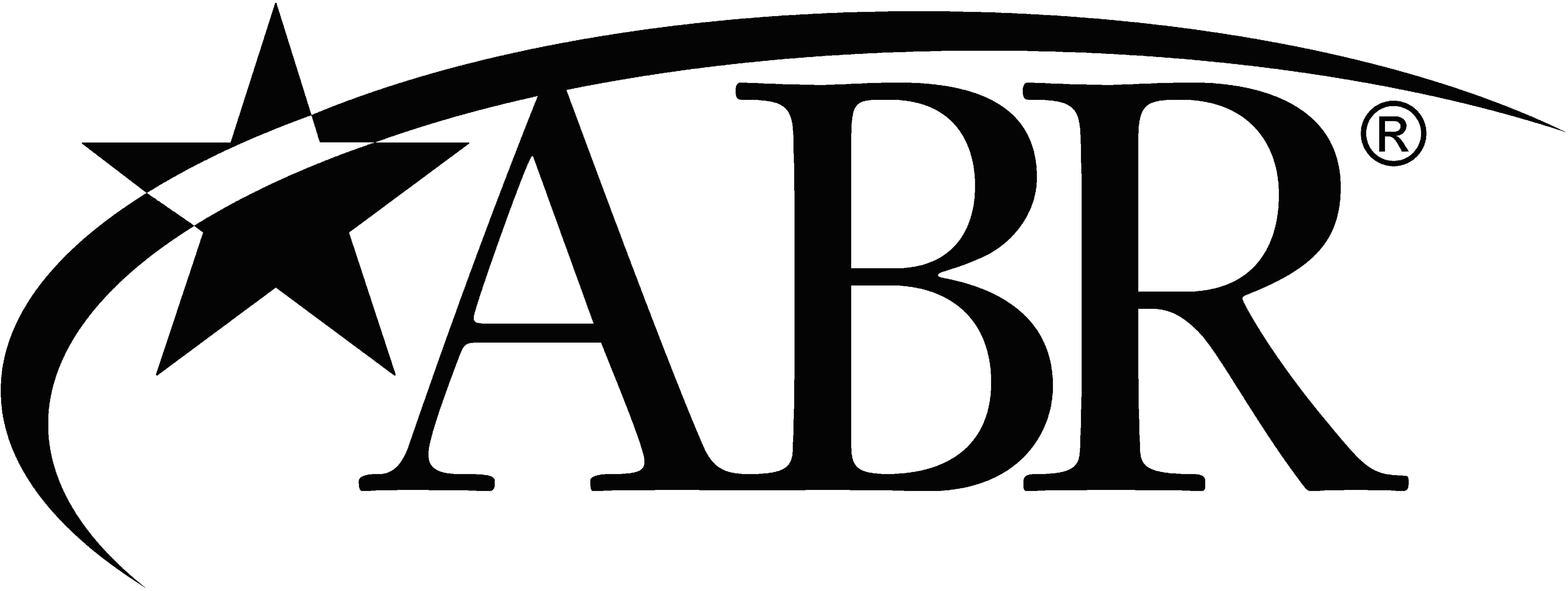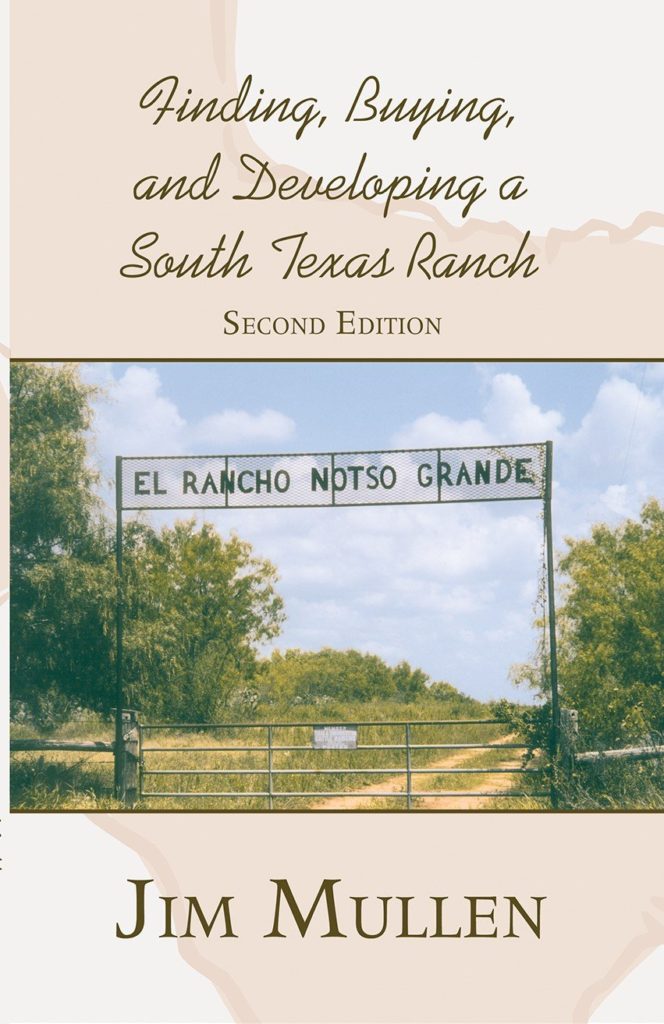Once you and your Broker have found several ranches that seem to fit your requirements, it is time to take a look, a “showing”. A showing is when you finally get to take a tour of the property. Usually on the first showing, both the Listing Broker and the Buyer’s Broker will be present. Follow-up showings may, at the Listing Broker’s discretion, be limited to just the Buyer and his Broker. Follow-up showings are a good time to bring wives and friends, to get another perspective and to help you remember details. Children are not really a good idea as spending the day cramped in a truck, nice as they are today, just looking at brush can make them cranky.

As the first showing will normally include the listing Broker, use this opportunity to ask a lot of questions. The listing Broker is your primary source for information on historic use of the ranch, neighbors, weather, and the Seller’s reasons for selling. Feel free to inquire as to the asking price and minerals. How was the asking price determined? Are there any comparable sales in the area? Is there any room for negotiation in the price? Does the Seller own more of the minerals than are being offered? Who owns mineral interests outstanding in third parties? Is there any production in the area and has there been any new activity recently? If there is currently production on the ranch or on a neighboring ranch, who is the producer? An important question, usually overlooked or just assumed, is the ranch currently under an agricultural valuation for ad valorem taxes? Sometimes incorrectly called an “agricultural exemption”, an agricultural valuation for farming, livestock, or wildlife is very important to your tax rate. Virtually all ranches currently have Ag valuation, but you should make sure. It does not affect your use of the place, unless it is under Ag valuation for wildlife management, in which case there is a management plan you will initially be obligated to follow.
Try to go during the week if at all possible, as even Brokers have families. Weekend showings are common, and to be expected. However, they add stress on the Brokers and increase the potential of a confrontation with the Seller. Sellers, by and large, are helpful; after all, they want to sell their ranch. However, they usually have some “sweat equity” in the land or give it some sentimental value. For this reason, they cannot be as objective as you, the Buyer, should be. They may take offense at certain critical questions if posed by the Buyer in a face to face meeting. Confrontations should be avoided; that’s what Brokers are for.
Allow plenty of time to see the ranch during a showing. Initially, assuming your choices are fairly close to each other, you can see several in a day, hitting the high points. On the first showing, try to see the surface water, the improvements, and a representative sampling of the vegetation. At this time, you are just trying to eliminate possible ranches, paring the selection down to two or three. Assuming a ranch fits your pocketbook, does it feel right? Does it give you a feeling of good value? Does the ranch appear to have been abused? Can it be restored economically, assuming you have the time and money to restore it? How about driving distance from your home; a lot of Buyers buy a ranch only to get tired of the drive after the first year. There is nothing more annoying on Sunday afternoon than looking at a 4 hour drive with three dirty, cranky kids and two dead deer that have to be turned in to the processing plant.

After this first look, it is extremely important to provide your Broker with feedback; what you liked and disliked about each property. Which ones you would like to see in detail and what information he needs to get for you before your return trip.
On a follow-up showing, since the selection should have been pared down, take more time to explore each property, maybe one ranch in the morning and one in the afternoon. On this showing, try to travel all the roads and the perimeter if at all possible. I sold a place out of Big Wells once that really only had one oilfield road on the whole 1,700 acres. Old roads were so overgrown that you could not get a truck down them and I tore off a rear view mirror trying to do so. I finally sold it using a rented helicopter that allowed the buyer to get some idea of just what was for sale. Speaking of helicopters, I recommend anyone buying more than 200 acres spend the $1,200 or so to see the land from the air. On a typical brush country ranch, I estimate you can see only about 10% of the place from a car. Using a helicopter gives you a much better idea of the density and composition of the vegetation on the ranch as well as a snapshot of some of the wildlife. It will also help orient you, making later exploration of the ranch easier. It could be argued that drones make this unnecessary. I maintain that, unless the drone is under your control, it will not look everywhere equally and may well give a slanted picture of the ranch.
Study surface water impoundments, lakes/ponds, carefully. I carry a collapsible fishing pole with a sinker and cork to test depth on tanks. Even deep tanks can be murky because of the soil type or because of turtles, trash fish, or alligators, so clarity is not a solid indication of depth. Aquatic vegetation in summertime is a good indicator of a ponds’ longevity, even though it may die back each winter, since it indicates some holding capacity. Look at the surrounding vegetation, which shows the high water mark as well as flood debris, an indicator of the watershed for the pond. Walk the edge of the water, looking for animal tracks. Nothing scientific here, but tracks will give you some idea of the relative abundance of wildlife. If you walk a pond in July and do not see any tracks, either there is another water source very close by, or there may be a shortage of wildlife in that area.

Lastly, inspect the dam. In South Texas, this is normally a misnomer in that what we see above the surface is really a “dump” of surplus soil. The true “dam” is the core of clay that was first “borrowed” from the pit and packed into a trench immediately under the dam. This clay-filled trench is tied into clay substrata and stops the flow of water downstream. Simply digging a hole, unless done in pure clay, will not make a dependable pond/stocktank; the water may follow a subsurface stratum of sand or gravel and drain away. On an older pond, trees on the backside of the dump can compromise the dam with roots seeking water. The roots penetrate the core and pass through, precipitating a leak. Looking on the backside of the dam may show whether or not the dam has been compromised by trees. A properly-constructed, properly-maintained dam will not have significant standing water on the backside nor will it have large, lush vegetation.
Certainly, in any dam, there will be seepage; some stocktanks losing several feet of water a year, with water going around the core and outward. Additionally, evaporation in South Texas can exceed 70 inches a year, so even well-built ponds will dry up over time making the watershed very important as that determines an impoundments’ potential to capture runoff. You should at this point, have a topographic or “topo” map of the ranch. These maps are invaluable for determining the optimum location for a new pond as well as the potential of an existing one. A very rough relationship of watershed to surface acres is 100 acres of watershed should produce runoff adequate for 1 surface acre of pond/stocktank. Certainly, vegetation, topography, and soils greatly affect runoff, just as depth of the pit on the stocktank will affect its’ longevity, but this will give you some idea. Simply draw a line from the dam uphill and upstream, connecting the highpoints and circling back to the dam. The land within this circle drains to that tank.
Look at water wells, sampling the water by tasting it and taking a sample for testing at a local lab, testing not only for fecal coli-form but for salts as well. Most shallow water wells in South Texas produce water with some salts yet are fine for most uses. Past a certain degree of salinity however, the water, while suitable for drinking by humans as well as wildlife, cannot be used for irrigation. Repeated use of salty water for irrigation will eventually deaden the soil due to salt accumulation. Irrigation may not be in your plans, but irrigation is an option that salty water will eliminate. Regardless, you should be aware of water quality.

If the well is equipped, run it for some time, several hours if possible, to see if it continues to produce water or does it “draw down”. Sometimes too-large pumps are put on a well that cannot keep up, due to a slow recharge of the underground reservoir. The well may still be perfectly suitable for a windmill or a solar pump, it is just limited.
If the well has a distribution system, be sure to ask for a map and try to find all the end points of the system. I am working on a ranch now that has a leak somewhere in a distribution system. The leak will drain a 1,550 gallon storage tank in a few days, so it is a fairly large leak. We have been unable to find the leak, even in the middle of summer, and think it may be some distance from the well. Everyone that might know where the system goes is long gone, so we may be forced to replace the whole system.
Sometimes in South Texas, the listing Broker will show you an open area with a pipe sticking up out in the middle. This is usually promoted as a “potential Carrizo well”. Be cautious about these wells as there are a lot of pitfalls awaiting the Buyer. Ask if the well has been officially turned over to the Seller or is it just abandoned. Is it in fact even abandoned?

If the bore has not been properly turned over to the landowner, you, as the new owner, may be liable for plugging the well even though you have no use for it and never were involved with it prior to your purchase. If the well has been signed over to the landowner, (the Seller), has it been plugged? Is the plug below the best aquifer or a shallower aquifer and, if so, may you get a copy of the plugging report? Has the well been perforated? If so, ask for the perforation records. All very important things to know about that pipe sticking up out in the pasture.
Next, with your soils map in hand, study the vegetation. On your first showing, you don’t need to learn to identify those plant species important to you. At this point, it is just important to look for diversity in the vegetation. You do not want a mono-culture of any one plant, no matter how good it may be. This is because the desirability or palatability of plants changes over time, so what may be the best deer browse in April is inedible in August. Likewise, while mesquite does produce a fine seed, readily eaten by a variety of animals, those seeds are only available for two weeks a year, and some years the seed production drops off to nothing. If you have a ranch with nothing but mesquite, 50 weeks of the year you’re going to be out of food! No, you need diversity and by that I mean more than two types of brush and a solid turf of bufflegrass.

An important skill when assessing land in South Texas is being able to spot areas that have been disturbed by Man. In most cases, old root plowed areas will re-vegetate in mesquite and Twisted acacia and usually have a lot of bare ground. This is because mesquite and Twisted acacia are better competitors than other brush species. It may have a lot of bare ground initially because these two brush species draw a lot of their moisture from the surface, precluding grass and weeds from becoming established. Seeing an area with primarily mesquite and twisted acacia or huisache should indicate to you an area that is currently of lower productivity. This may be a good thing, as these areas were originally chosen as improved pasture because of more productive soils. They may be recovered as fields economically if the brush is not too large. But if you don’t want a field there, or it is a large tract, remember it will be some time before that land returns to the productivity of adjoining, diverse brush land.
Another trick is to spot areas that were chained or simply pushed with a bulldozer. In these areas, the mesquite trees will have multiple trunks arising from a single base. This is because removal of the top portion of a mesquite plant causes it to resprout with multiple stems. Spotting old chained or “stacked” areas is important as these areas may also have lower productivity even though diversity may not appear affected. A lot of Buyers are keyed to “virgin” mesquite. While you can still find stands of mesquite that has never been disturbed, multiple trunks, even on a big mesquite, is a strong indicator that the land has been disturbed in the distant past and those are NOT “virgin” mesquite trees.
Diversity in ground cover is important as well. Remember in the example of an old recovering root-plowed area, I mentioned that it would be brush and bufflegrass? Bufflegrass is an introduced grass that is very drought tolerant and very invasive. This is great for a cowman, but not as great for someone wanting to manage for quail or even for deer. As with brush, diversity is important in ground vegetation. Any dominance by a grass will reduce the amount of forbs on the ranch. Wildlife feed heavily on forbs (weeds), and cannot live on grass like cows. On the first showing and any subsequent showings, look for diversity in the vegetation. Ideal habitat for game species in South Texas, while varying somewhat between species, will consist of a variety of short brush with a scattering of taller trees and fairly solid groundcover consisting of weeds mixed with a variety of native bunchgrasses. The ideal may not be available, but it is important to know what to look for.

During the first showing, it is important to look at the improvements with a critical eye. Repairing existing structures can be more expensive and time consuming than building new ones in rural areas simply because there is a shortage of quality remodel craftsmen. That old frame house that was certainly charming in 1940 may cost twice as much to remodel as buying a new doublewide with all the bells and whistles. Considerations at this point include power, easily the most important as installing power can be very expensive, water, and location of the improvements. People seem to want to put their camp or headquarters in the center of their ranch. This is not the best location, in my opinion, for several reasons. First of all, you have to improve the road from the gate to the headquarters as you will want to get in and out in all kinds of weather. Secondly, putting the headquarters in the middle of the ranch introduces noise and smells to the center, driving wildlife to the edges. Lastly, putting the improvements in the middle hides them from the public. While that may be your objective, it also increases the chances of vandalism and theft in a camp that is not occupied most of the time. Since no one can see the camp, thieves feel safer taking their time going through your stuff and loading it up, or tearing it up, at their leisure. If you have the option of locating the headquarters, put it closer to the entry, not necessarily on the road, but close enough for some ease of access and some security. If the headquarters is in place and fairly extensive, it may well have to stay. In that case, look for structural soundness and utility. There is an old saying, “you can’t have too big a barn” and, while it may be true that you can never have too big a barn, you can have too big a house or too many houses on a ranch.

What buildings do you need on a ranch? Basically, on a working ranch, you need a house for the owner, a guest house, and houses for employees, if any. On my first ranch as manager, I had a house, the owner had his house, and we had a smaller house for my helper, this on 5,400 acres. At the time, we had other employees, but they commuted from town. The ranch “staff” consisted of me and two or three full-time helpers. We contracted out brush work and of course called in several more helpers when we worked cows. On a recreation ranch, you may need that many houses, or you may not need more than one, your house. The need for habitations varies with size of the ranch, intensity of management, and how much of the work can be contracted out. Even filling feeders is often contracted out now, as many people do not want the hassle of full or part-time employees on their ranch. So give this some thought before you buy a place with four houses and a bunk house that sleeps 10.
Barns and outbuildings are another matter. Since these buildings ordinarily are not heated and may not even be entirely enclosed, having an extra shed or barn is not a bad deal. Maintenance on a barn is nothing compared to a house, and the openness of a barn lends it to conversion to other uses. I recently saw an old metal building south of Cotulla that had been converted into the game cleaning room. They had poured a concrete floor, using the walls as forms, added a drain, and wired it extensively for lights and outlets. They then added a door to the outside, which allowed them to hang the deer at the truck, and then bring it in out of the weather for cleaning. Completing the redo was a game cooler in the corner of the barn. For barns and outbuildings, concern yourself with the roof. If the roof is sound, that building should be O.K. without extensive maintenance, whether you plan to use it right away or not.

A lot of people ignore one of the most expensive improvements on a ranch and end up paying for it later. Fencing runs as much as $3.00 per foot for five strand barbed wire, $5.00 per foot for high fencing. Try to drive all of the perimeter fencing and where inaccessible by vehicle, get out and walk it. If it is in bad repair, know that repair or replacement costs are in your future, even if you have no intention of high fencing your ranch.
Lastly, while not an improvement; ask to see the ranch dump. This is usually in an out of the way location and may or may not need any attention. But a minimum you may want to consider having it looked at by an environmental inspector in the Phase I.






